"Each fleshy plant is a small blessing given by nature. They use thick leaves to store sunshine and gentleness, and bloom with unique vitality in the square flowerpot." More and more people are addicted to the cuteness of succulent plants, but they often encounter the troubles of "fleshy turning into 'thin' meat" and "black rotten roots" during the maintenance process. In fact, it is not difficult to raise a lot of meat. The key is to master their growth habits and use scientific methods to provide appropriate care. Next, this ultra-practical maintenance guide will take you into a meaty world, making your "meat" full, bright and in full condition.
 1. First encounter with meat: Understand the little secrets of "meat"
1. First encounter with meat: Understand the little secrets of "meat" Before starting the journey of maintenance, let's first get to know these lovely little lives. Succulent plants, also known as succulent plants, refer to the degradation of one or more of the three nutrient organs of plants, roots, stems, and leaves, and become thick and succulent, used to store water and adapt to a drought and water-deficient environment. They are widely distributed around the world, and can be seen from tropical savannah in Africa to arid deserts in the Americas.
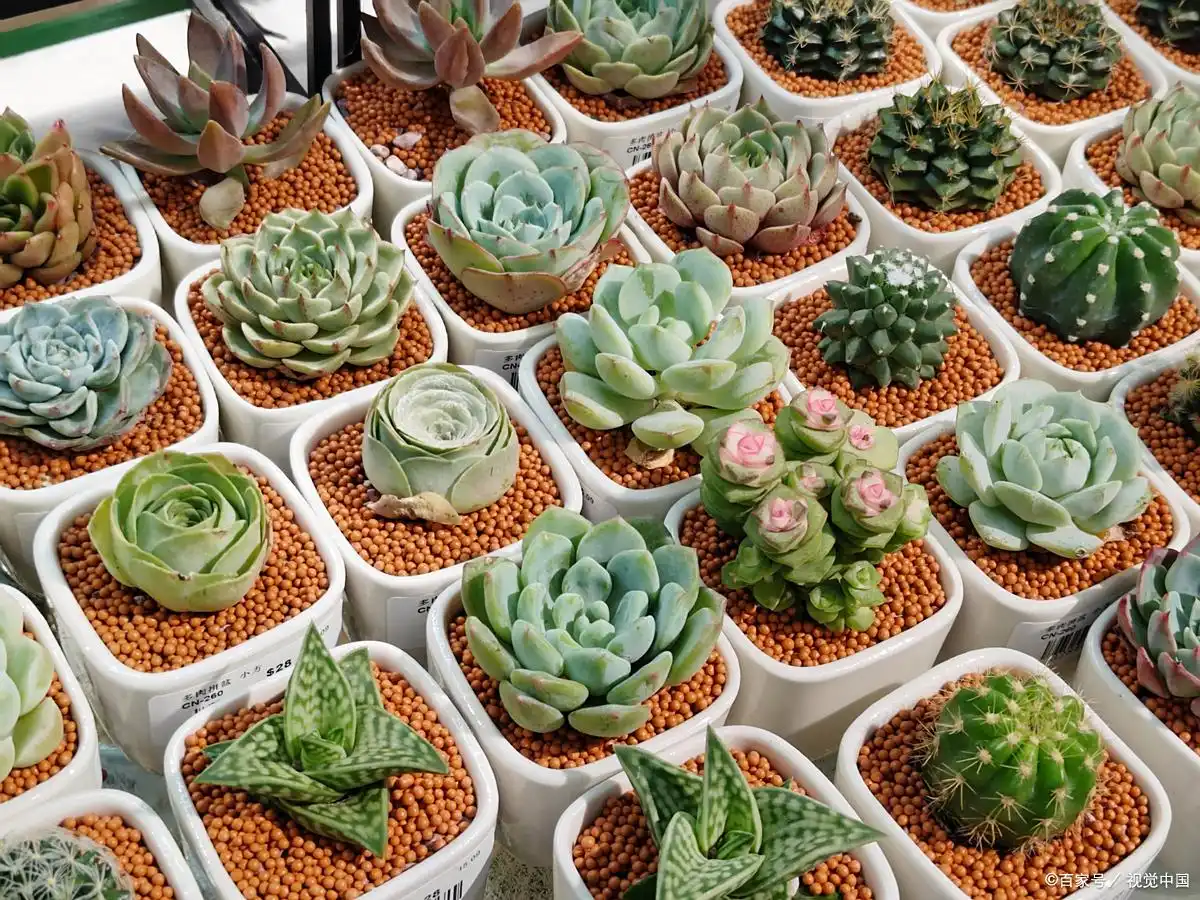
According to the different parts of the water-storing tissues, succulent plants are mainly divided into three categories: leaf-succulent plants (such as jade dew and bear boy of the Crassulaceae), succulent plants with stems (such as cactus of the cactus family, bachelors of the Euphorbiaceae) and root-succulent plants (such as cone flowers of the Musciaceae family, orchids of the Raspaceae family). Although different types of meat have similarities in maintenance, they also have subtle differences, which is what we should focus on in the future.
The "succulent" characteristics of succulent plants are the result of long-term adaptation to harsh environments. Studies have shown that their leaves or stems contain large amounts of parenchyma, which can absorb and store water like sponges, while waxy layers or villi on the surface of the leaves can reduce water evaporation. This strong water storage capacity allows them to survive under drought conditions, but it also determines that their water demand is much lower than that of ordinary plants. This is the core cognitive prerequisite for maintaining meat.
2. Core of maintenance: Ten key steps. The key to making meat grow andgrow vigorously is to "conform to nature" and simulate the light, moisture, temperature and other conditions of their native environment. The following ten steps cover all aspects of fleshy maintenance. If you follow them, you can make your "meat" grow healthily.
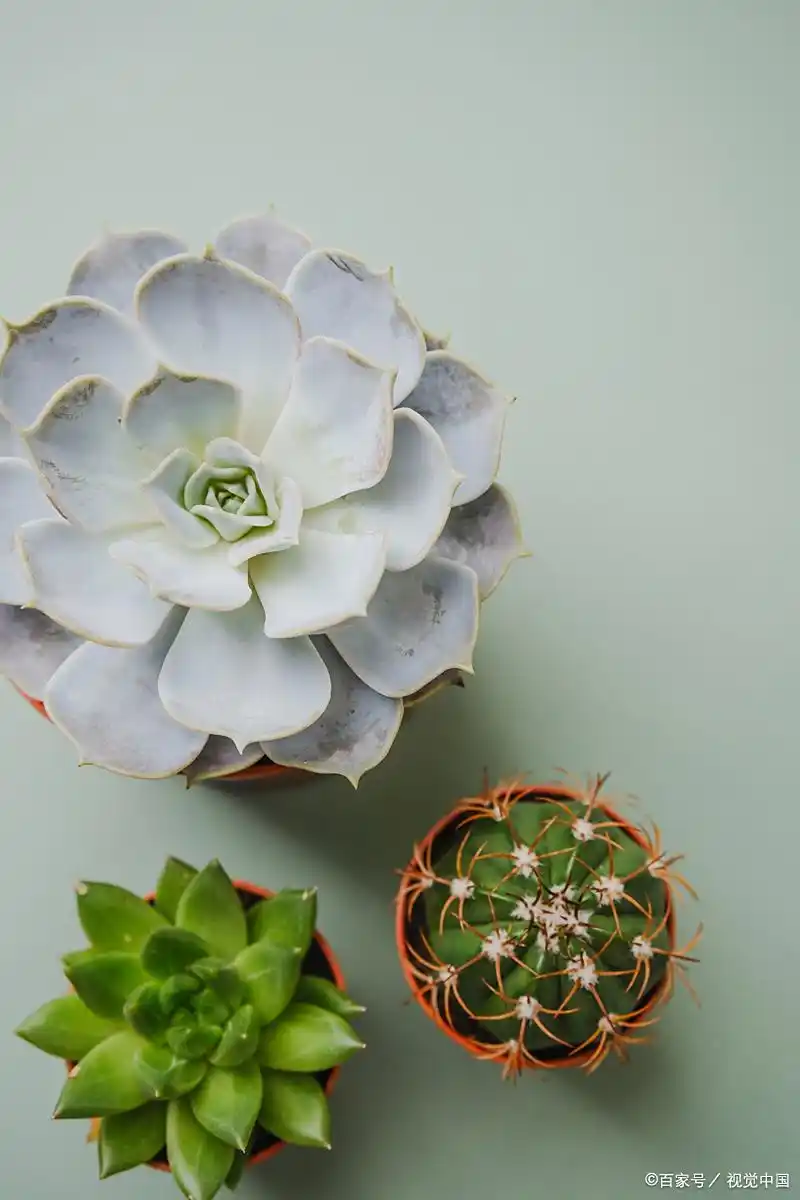
Watering: "See when it is dry, see when it is wet" is the golden rule.
Watering is the most prone to mistakes in the maintenance of fleshy meat."Water to death" causes much more fleshy meat than "drought to death". The roots of succulent plants should avoid standing water. Once the soil is moist for a long time, it will easily cause rotten roots and black rot. The correct watering principle is "see dry see wet", that is, wait until the basin soil is completely dry and then pour it through once, until the bottom of the basin has water flowing out.
How do you know if the soil is dry? There are three methods: one is to insert toothpicks or chopsticks into the pot soil, if there is no moisture after pulling out, the soil is dry; the other is to observe the surface of the pot soil, if the soil is white, cracks appear, and the flowerpot becomes lighter, it also means that watering is needed; third, for leafy succulent plants, if the bottom leaves are soft and wrinkled, it is a signal of water shortage.
Watering frequency should be adjusted according to season and environment: spring and autumn are the peak seasons for fleshy growth, generally watering 1-2 times a week; summer high temperature, fleshy into semi-dormant state, to reduce watering, watering once every 10-15 days, and choose in the evening cool; winter low temperature, most fleshy dormancy, watering once a month can be, even some varieties can cut off water. In addition, avoid watering the center of the leaves when watering, especially varieties with fluffy or rosette shapes in the leaf heart (such as Bear Boy and Guanyin Lotus), otherwise it may easily lead to leaf rot.
Soil: Permeability and porosity are
the key. The roots of succulent plants need good breathability, so the choice of soil is crucial. The ideal succulent soil should be a mixed soil that is breathable, loose and has good drainage properties. Ordinary garden soil cannot be used because garden soil is easy to harden and is not conducive to root respiration.
Commonly used soil ratio plans are: peat soil: granular soil =1:1 (suitable for succulent during the peak growth season); peat soil: granular soil =1:2 (suitable for succulent summer, winter or adult piles). Among them, peat soil can provide nutrients and water retention, while granular soil can increase air permeability and drainage. Common granular soils include perlite, vermiculite, volcanic stone, medical stone, red jade soil, etc. It is recommended to mix multiple granular soils for better results.
In addition, a small amount of slow-release fertilizer or bone meal can be added when mixing soil to provide a slow supply of nutrients for the meat. After the soil is prepared, it is best to disinfect it, such as exposing it to the sun for 2-3 days, or spraying it with carbendazim solution to kill eggs and bacteria in the soil and reduce the occurrence of pests and diseases.
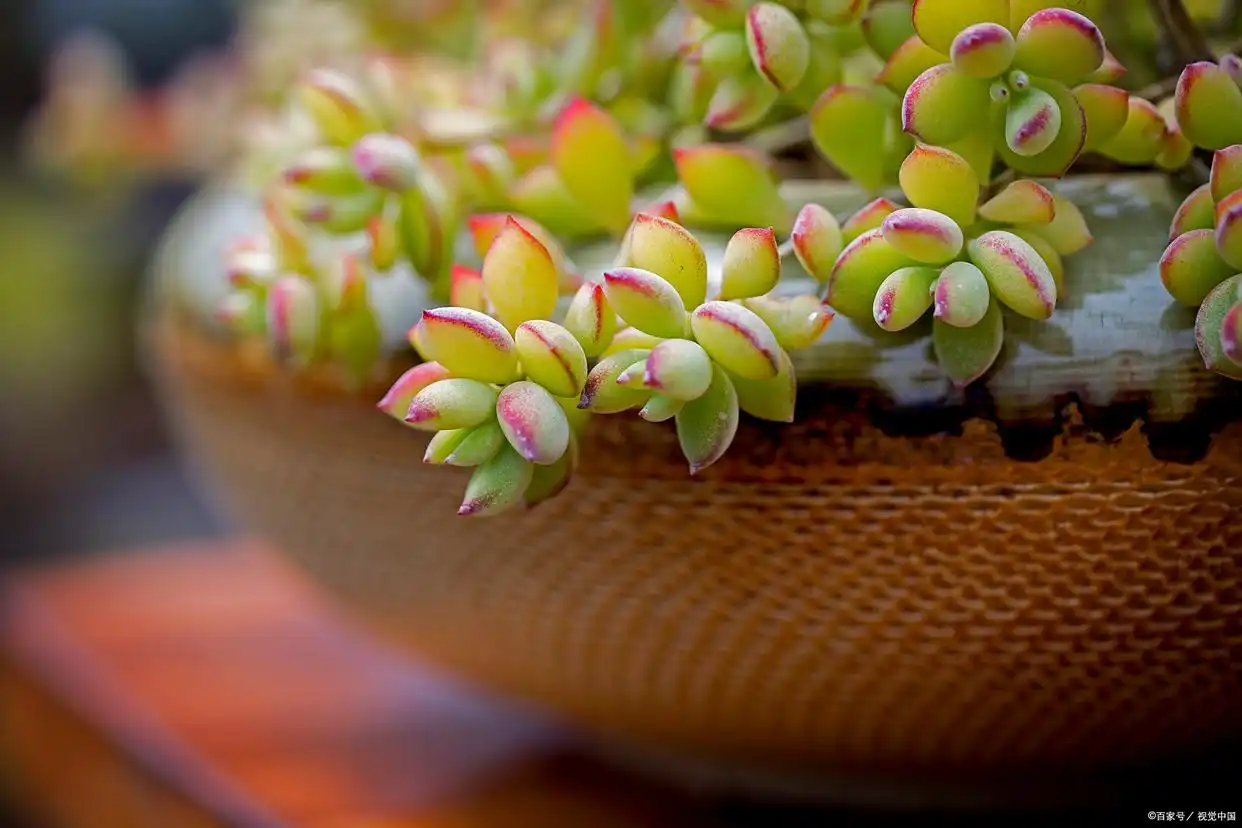
Light: Adequate but avoid exposure to the sun Most
fleshy plants prefer adequate light. Adequate light can not only make them grow strong, but also promote them to color and show bright colors (such as Crassulaceae's rainbow jade and fire sacrifice). If there is insufficient light, the fleshy body is prone to excessive growth, that is, the stalks are long and slender, the leaves are sparse, and the color is dim, which seriously affects the ornamental quality.
Different varieties of fleshy have different needs for light: most fleshy meats such as Crassulaceae and Primiaceae require 4-6 hours of direct light every day; while fleshy species of the twelve scrolls (such as Yulu and Shou) prefer Scattering light and are not resistant to direct light, otherwise the leaves will easily be burned.
During the maintenance process, the light should be adjusted according to the variety: place the meat that requires strong light on the south-facing balcony or window sill to ensure sufficient light; place the meat that likes to *ter light on the east balcony or in a bright place indoors. When it is hot in summer, pay attention to shade and avoid strong light exposure at noon. You can use a sunshade net or move it to a cool and ventilated place; the light is weak in winter,You can place the meat by the window and receive as much sunlight as possible. If necessary, use a fill light to fill the light for 3-4 hours a day.
Temperature: Suitable range 15-28℃
The most suitable growth temperature for succulent plants is 15-28℃. Within this temperature range, they grow rapidly and are in good condition. When the temperature exceeds 35℃ or below 5℃, most meat will enter a dormant state and growth will stagnate. At this time, maintenance measures need to be adjusted.
When high temperatures are high in summer, we should do a good job in cooling and ventilating: place meat in a well-ventilated place to avoid sultry environment; you can often spray water around to cool down, but do not spray it directly on the leaves; reduce the frequency of watering to avoid soil moisture causing rotten roots. When low temperatures are low in winter, pay attention to keeping warm and cold: move the meat to a warm place indoors and avoid placing it near the window where cold wind blows directly; when the temperature is below 0℃, stop watering to prevent the soil from freezing and damaging the roots; For varieties that are not cold-resistant (such as masters and bear boys), you can cover the flower pot with plastic bags to create a warm environment, but pay attention to regular ventilation.
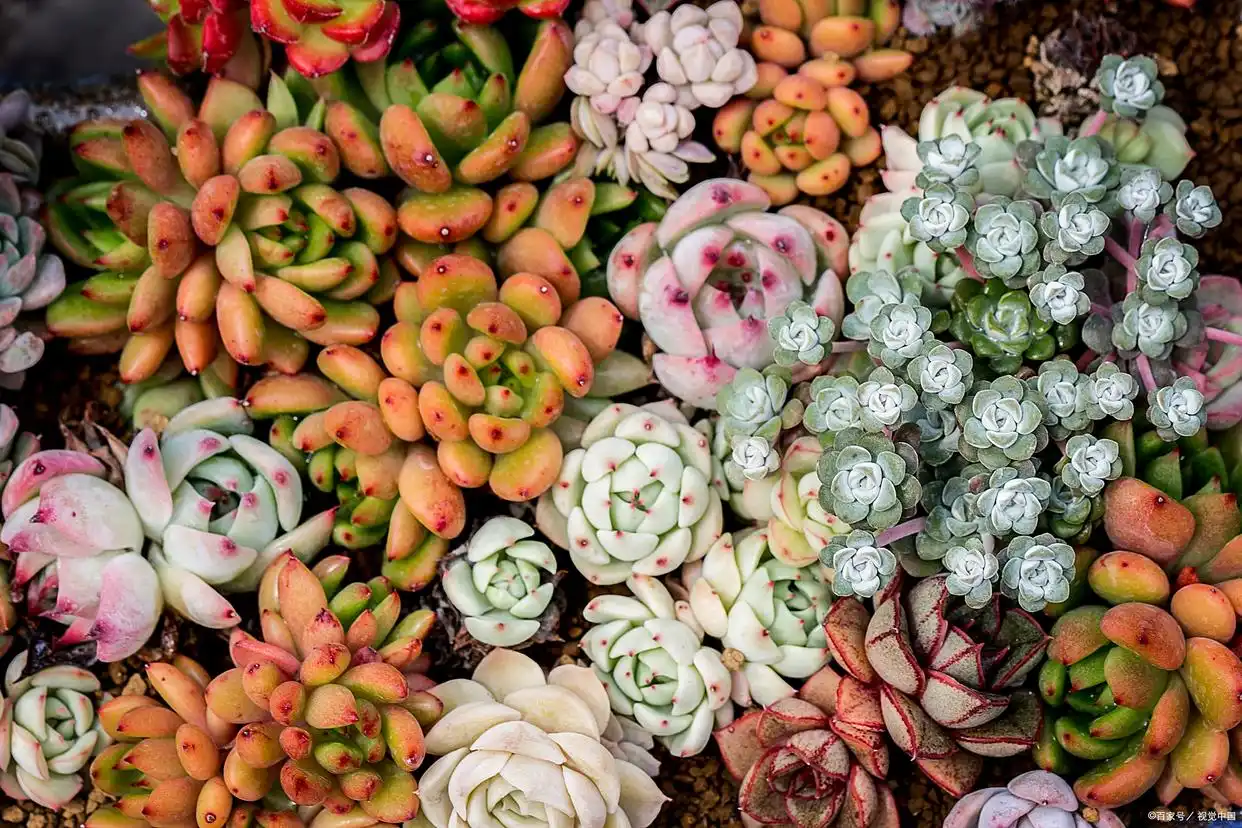
Fertilization: Apply thin fertilizer frequently.
The demand for fertilizer for succulent plants mainly during the growth period is not high, but reasonable fertilization can promote their growth and coloring. The principle of fertilization is "thin fertilizer and frequent application", that is, the fertilizer concentration should be low, the frequency of fertilization should be high, and it should be carried out only during the peak growing season.
Fertilization time: Spring and autumn are the succulent growth seasons, and fertilizer is applied every 2-3 weeks; during summer and winter dormancy periods, fertilization is stopped. Fertilizer selection: You can use a special meaty slow-release fertilizer, which is directly buried in the pot soil, and the fertilizer effect can last for 3-6 months; you can also use liquid fertilizers, such as diluted meaty nutrient solution and potassium dihydrogen phosphate solution, to avoid touching the leaves when watering. Pay attention when fertilizing, and do not overapply fertilizer, otherwise it may easily lead to fertilizer damage, yellowing of leaves, wilting and other phenomena. If you accidentally fertilize too much, you should water the basin soil with clear water in time to dilute the fertilizer concentration.
Pot change: Once a year,
succulent plants grow faster in spring and autumn. As the plants grow, the pots will appear too small and the pot soil will gradually harden, so the pots need to be changed regularly. The frequency of changing pots is generally once a year, and the best time is the peak growth season in spring or autumn.
Steps of changing pots:
First, stop watering 1-2 days in advance to allow the soil to dry for easy removal;
Second, remove the meat from the original pot, gently shake off the old soil at the roots, and check whether the root system has rotten or dead roots. If so, cut off with disinfected scissors, and apply carbendazim to the wound to disinfect;
Third, prepare a new flower pot and soil. The flower pot should be 1-2 rings larger than the plant, and there should be drainage holes at the bottom;
Fourth, lay a layer of ceramite or gravel on the bottom of the flower pot to enhance drainage, then fill in an appropriate amount of new soil, place the meat in the center of the flower pot, fill the soil with the soil, and gently compress it;
Fifth, do not water immediately after changing the pot. Place it in a cool and ventilated place to slow the seedlings for 1-2 weeks. After the root system resumes growth, then maintain normal watering.
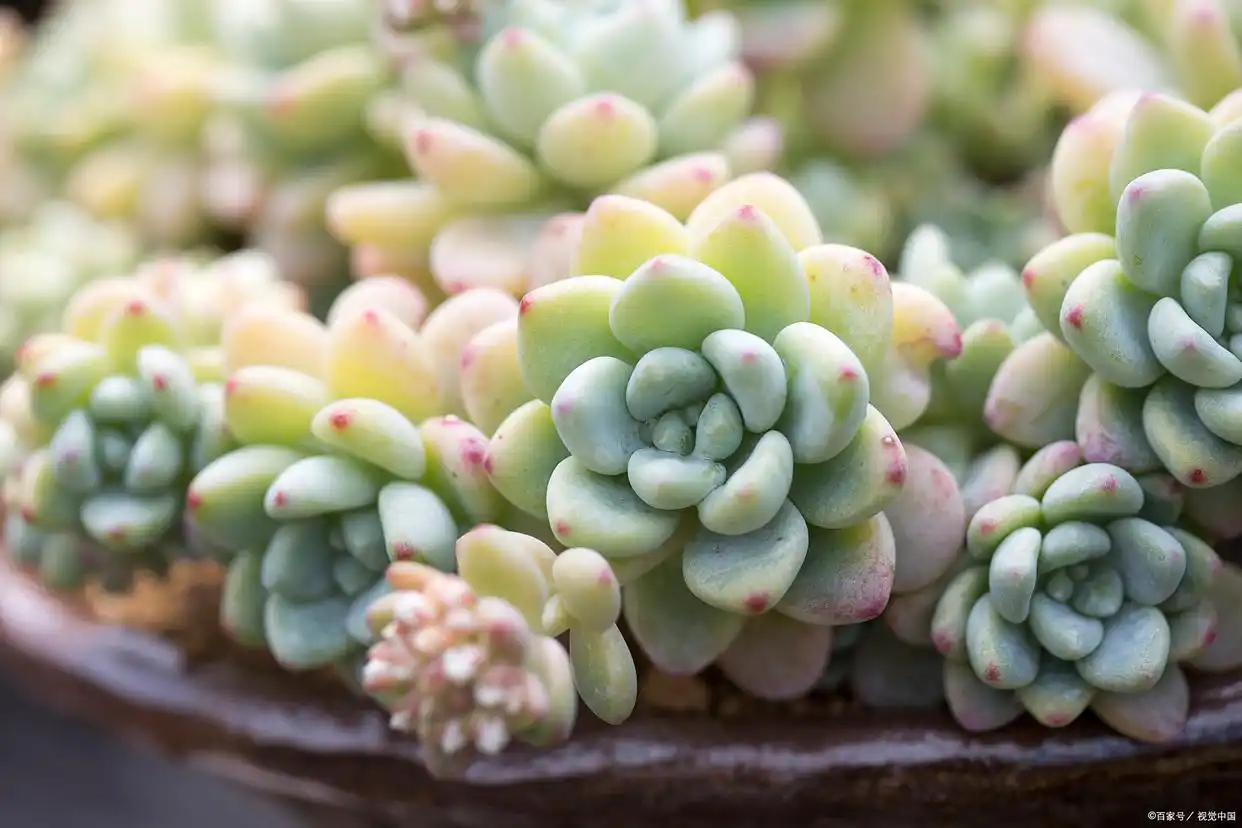
Pest and pest control: Prevention is the main priority, early detection and early
treatment. Although succulent plants are relatively resistant to pests and diseases, they are also vulnerable to pests and diseases in an environment of high temperature, high humidity and poor ventilation. Common pests and diseases include black rot, root rot, scale insects, red spiders, etc.
Preventive measures: Keep the basin soil ventilated and drained well to avoid standing water; strengthen ventilation to reduce sultry environment; regularly disinfect the soil and plants, such as spraying with carbendazim solution. Treatment methods: If black rot or root rot occurs, remove the diseased plant from the pot in time, cut off the rotten roots and leaves, and put it back into the pot after disinfection; if scale insects are infected, use a toothpick to pick it off in a small amount, and spray it in a large amount with omethoate EC or imidacloprid solution; if red spiders appear, spray it with abamectin solution, once every 3-5 days, and spray it 2-3 times continuously.
Ventilation: A succulent and healthy "invisible guard"
. Good ventilation environment is crucial for succulent plants. It can promote air circulation, reduce the humidity of the pot soil, reduce the occurrence of pests and diseases, and can also help succulents regulate body temperature and avoid high temperature burns. Many novices can't raise meat well, just ignore the ventilation link.
In home maintenance, try to place meat in well-ventilated places, such as balconies, windowsills, terraces, etc. If the indoor ventilation is poor, you can use a fan to assist in ventilation and drive it for 2-3 hours a day to keep the air flowing. When high temperatures are in summer, fans are even more indispensable, which can effectively reduce the ambient temperature and prevent death from being sweltering and stuffy.

Variety selection: For novices, starting with the "Pishi" variety
is very important for novices to choose the right succulent variety. It is recommended to start with the "Pishi" variety that is easy to maintain and highly adaptable, and then try it more difficult after accumulating maintenance experience. Variety.
Recommended varieties for beginners: white peony (drought-resistant and sun-resistant, grows rapidly, and is easy to burst into pots); Long Yue (tenacious vitality, high survival rate of cuttage); Purple Pearl (easy to color and strong ornamental); Jade Dew (likes to *ter light, suitable for indoor maintenance); Bear Boy (cute in appearance, easy to maintain as long as water is controlled). These varieties have strong adaptability to the environment. Even if they are not properly maintained, they are not easy to die easily. They are very suitable for novices to practice.
Breeding: Easily realize "fleshy pot"
. There are various breeding methods for succulent plants and a high survival rate. Mastering breeding skills can allow you to easily have more "meat". Common reproduction methods include leaf cutting, stem cutting, sowing, etc.
Leaf cutting: Suitable for leafy succulent plants, such as most varieties of Crassulaceae. Select healthy and plump leaves, gently break off from the plant, place them in a cool and ventilated place to dry for 2-3 days. After the wound heals, lay them on the moist soil surface to keep the soil slightly moist. After about 1-2 weeks, the leaves will take root and germinate, and can be transplanted when the seedlings grow up. Stem insertion: Suitable for fleshy stalks with obvious stems, such as masters and bachelor trees. Cut off the strong stem segments, dry the wound, insert them into moist soil, keep the soil slightly moist, and take root after about 2-3 weeks. Branch: Suitable for fleshy meats that are easy to grow in groups, such as Guanyin Lotus and Zizhi Lotus. Remove the plants from the pot, gently separate the clusters of small plants, and place them in the pot for maintenance. Sowing: Suitable for players who want to cultivate new varieties. It is more difficult and requires a long time and patience.
3. Conservation mentality: Accompanying the growth of "meat" with patience and love"Everything grows with its own laws, and the maintenance of succulent plants is also a slow process." Raising more meat cannot be rushed for success. Their growth rate is relatively slow and requires us to wait patiently. Sometimes, you may find that the meat has not changed for a long time, or even some minor problems occur, but as long as the maintenance methods are adjusted in time, they will quickly come back to life.

During the maintenance process, more observations and summaries should be made. Each fleshy plant has its own "character". They will convey demand signals through the changes in the state and color of the leaves. As long as you observe carefully, you can understand these signals and give them the most appropriate care. At the same time, don't blindly follow the trend. Other people's maintenance methods may not be suitable for your fleshy meat. You should explore the maintenance skills that suit you according to your own maintenance environment and variety characteristics.
Raising more meat is not only a hobby, but also an attitude towards life. When you see the fleshy meat you have personally maintained grow from a small seedling to a plump and bright plant, and even bloom into beautiful flowers, the sense of accomplishment is beyond words. As the ancients said: "Calm is to cultivate one's own cultivation, and frugality is to cultivate one's virtue." The process of raising more meat is also a process of self-cultivation. It allows us to calm down and feel the beauty of nature and the wonder of life in a fast-paced life.
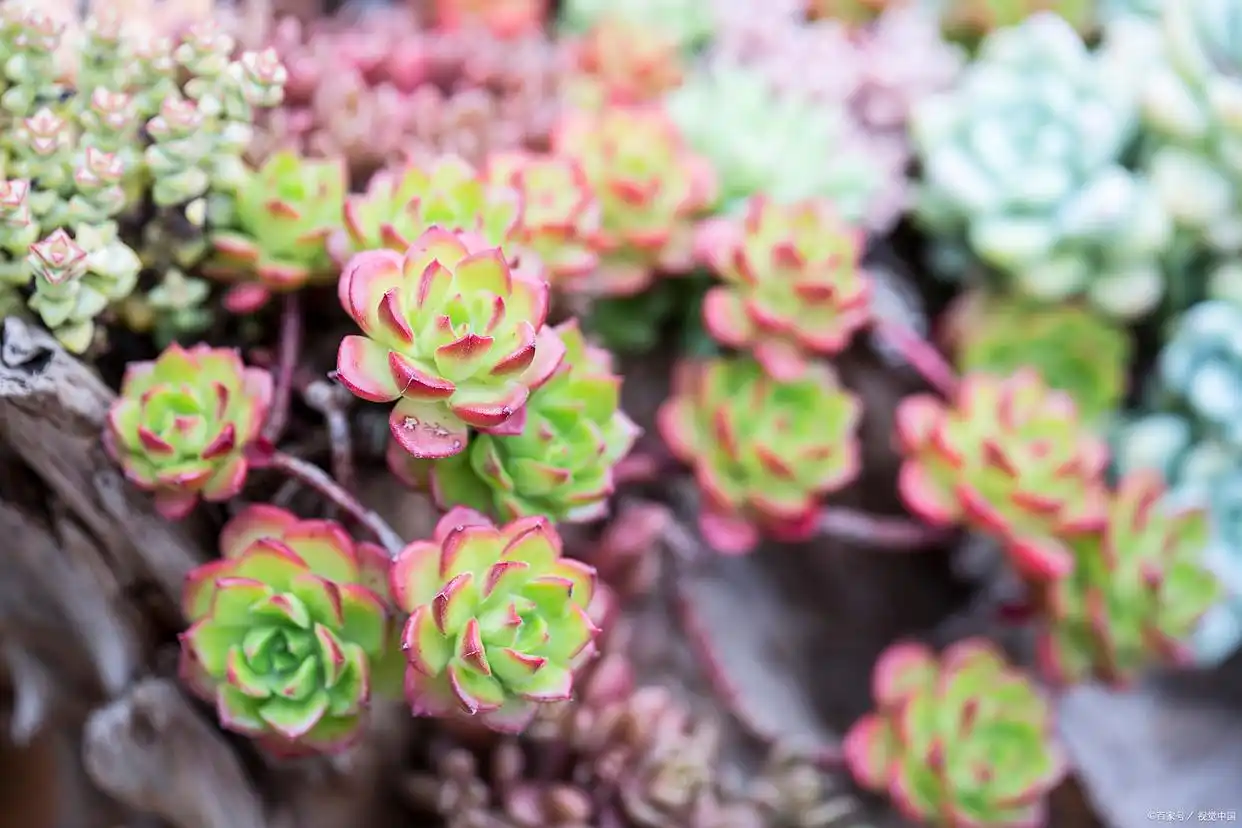
Finally, I hope this maintenance guide can help you raise every succulent plant so that these lovely little lives can bloom with the most charming brilliance under your care. Remember, as long as you put your heart into it, you can also become a master of meat maintenance!